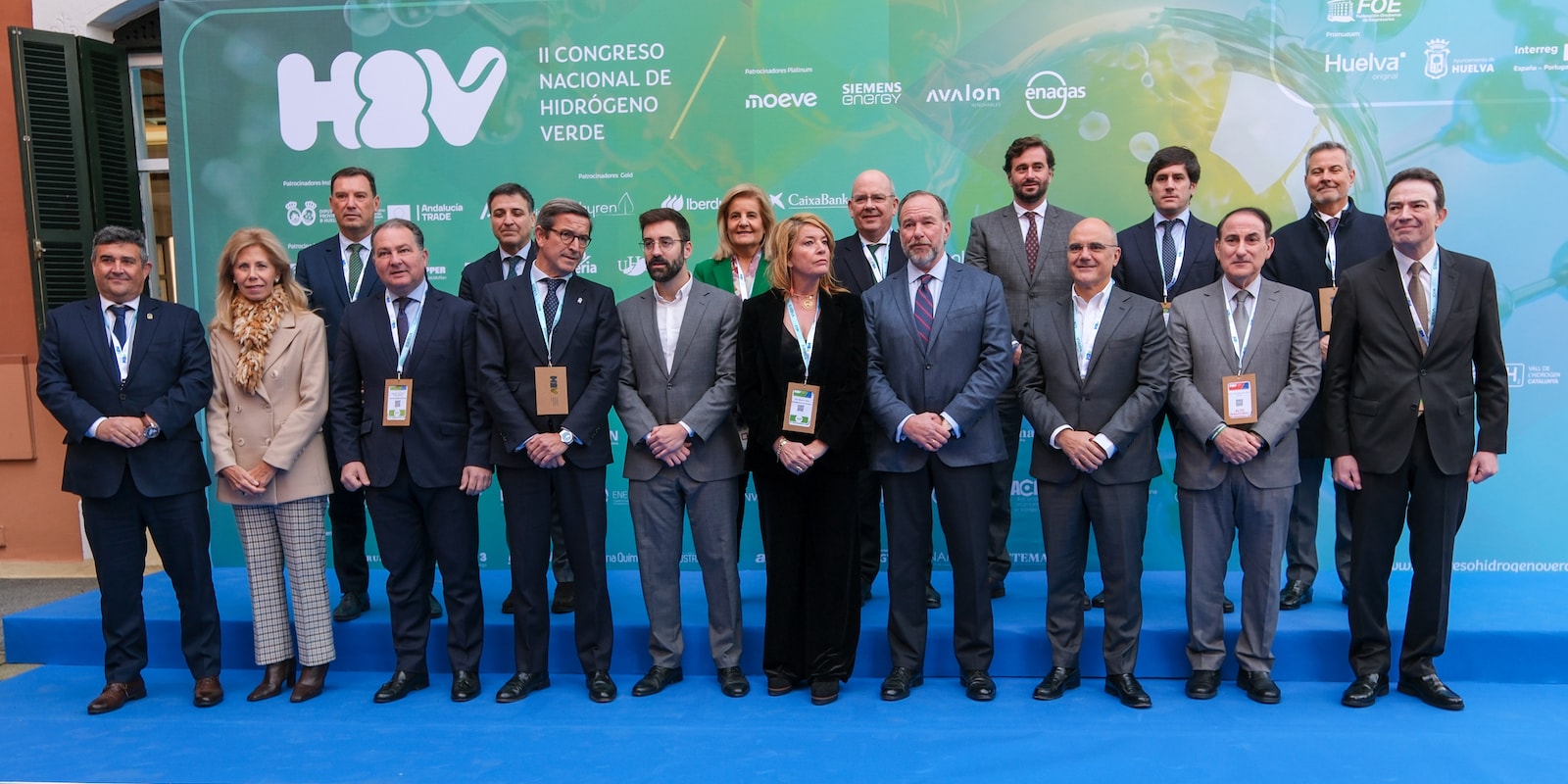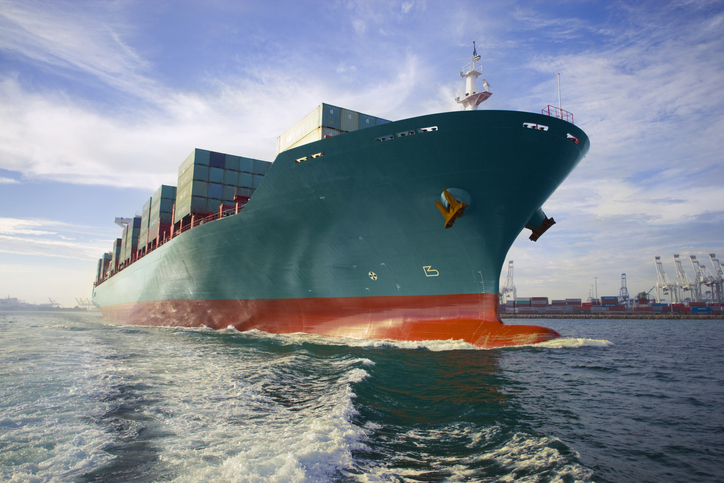Friday, February 14, 2025
This second edition of the event highlighted the crucial role of maritime transport and Andalusia’s leadership in driving a key industry for decarbonization.
Once again, Huelva took center stage in the green hydrogen sector, hosting the National Green Hydrogen Congress. This event has focused on the main milestones of a key industry in the decarbonization and energy transition. Among them are training programs for the Hydrogen Valley Alliance and the Hydrogen Academy. These organizations, focused on fostering collaboration and education around hydrogen, played a central role in discussions. The meetings mostly focused on maritime transport and Andalusia’s current (and future) impact in driving this growing sector.
The first of the initiatives, the Alliance, will be made up of 16 hydrogen valleys across the country and will seek to promote the development of local hydrogen ecosystems, as well as learning from the best practices of each one, while collaborating in projects and improving the relationship with Spanish and community institutions. As outlined in the meeting, the main goal is to establish a turning point in shaping a sustainable and competitive future for Spain. This collaboration will play a crucial role in combating climate change while ensuring the competitiveness of a sector that currently produces nearly 900,000 tons of hydrogen annually.
At the same time, the congress served as a platform to introduce the Hydrogen Academy, which aims to train operators in the handling, storage and transportation of renewable hydrogen, an area with a growing demand for skilled professionals. In fact, the entity specializing in green hydrogen, Wulkan Energy, which is one of its drivers, wants to take advantage of the existing ecosystem in Spain, and especially in Andalusia, to train its own operators.
When it comes to this issue, Rafael Fernández Qundez, Director of Talent at Moeve, emphasized the importance of developing soft skills, which are crucial for today’s evolving work environment. He highlighted that collaboration, the ability to build alliances both within and outside the company, agility, and the integration of artificial intelligence are all key factors. Beyond technical expertise, employees need to develop a broader perspective on projects and learn how to work effectively with public administrations and startups. "The energy transition requires collaboration and closeness to adjust what the company needs and what the market offers," he noted.
Andalusia's Golden Age
Teresa Rasero, President of the Congress Honor Committee, emphasized that, according to data from the International Energy Agency, “20% of Europe's green hydrogen projects will originate in Spain, with Andalusia, and Huelva in particular, playing a key role in this development.” Following this line, Joan Groizard, the Secretary of State for Energy at the Ministry for Ecological Transition and Demographic Challenge, reaffirmed the pivotal role of this energy source in the future, emphasizing that the central government is actively working toward full economic decarbonization; “a strategy that gives real purpose to the green hydrogen market,” he noted.
The Congress was attended by the President of the Regional Government of Andalusia, Juanma Moreno, who announced that the Andalusian Green Hydrogen Valley project, developed by Moeve, has been assigned to the Project Accelerator Unit in the towns of Palos de la Frontera (Huelva) and San Roque (Cádiz). The president explained that 11 projects are set to capitalize on the region’s potential, helping to drive its reindustrialization. As a result, Andalusia will experience a “golden age” in the energy transition, according to his words, and green hydrogen and biofuels will represent “a transcendental change”.
The aim is for the region to produce a third of Spain's renewable hydrogen by 2030. To achieve this, Carlos Barrasa, Head of Commercial & Clean Energies at Moeve, stressed the need to “streamline bureaucracy and set up a sustainable legal framework, as large-scale green hydrogen will be the driving force behind the region’s reindustrialization.”
Among the projects already announced by Moeve for the region is the Andalusian Green Hydrogen Valley, with a planned investment of 3 billion euros. According to Joaquín Rodríguez, Head of Hydrogen & Clean Power at Moeve, the Andalusian Green Hydrogen Valley will be able to produce 300,000 tons per year, leading to a reduction of six million tons of carbon dioxide. “That’s equivalent to the emissions saved by 5.5 million electric cars included in the latest update of Spain’s National Integrated Energy and Climate Plan,” he pointed out.
The importance of maritime trade (and collaboration)
Moreover, Rodríguez focused on maritime transportation to improve production and application processes, compared to other infrastructures that require certain development: He specified that “Maritime corridors are immediate, we’ll be able to transport hydrogen or methanol to ports such as Rotterdam and distribute it from there”.
Spain has approximately 8,000 kilometers of coast, so some of the most important ports of maritime commerce are located within its borders. Alberto Santana, president of the Port Authority of Huelva, agreed that the maritime routes should be used for green hydrogen. His counterpart from the Bay of Algeciras, Gerardo Landaluce, echoed this view, emphasizing that developing hydrogen corridors is crucial for ensuring Europe's energy autonomy.
Collaboration shouldn’t only take place in our country; Europe also has a part to play here. Monica Swanson, Program Manager for Hydrogen at the Port of Rotterdam, summed it up this way: “We need each other as hubs. We must stay connected.” She emphasized that “European cooperation is essential to maximize benefits.”
The panelists also spoke about emissions from maritime trade and the need to decarbonize it. Rodríguez pointed out that “currently we already produce and supply biofuels as an alternative to achieve decarbonization, but second-generation biofuels have a limitation due to a shortage of raw materials. We must continue working intensely, with the port authorities, among others, to develop additional alternatives, such as hydrogen and its derivatives, in the form of ammonia and methanol, that will help us to achieve our goal of reducing emissions in cargo traffic.” On an end note, he stressed that green hydrogen and its derivatives, including e-SAF, are crucial energy solutions for decarbonizing sectors where electrification isn’t feasible, such as maritime transport, aviation as well as heavy industry.
¿Te ha parecido interesante?





